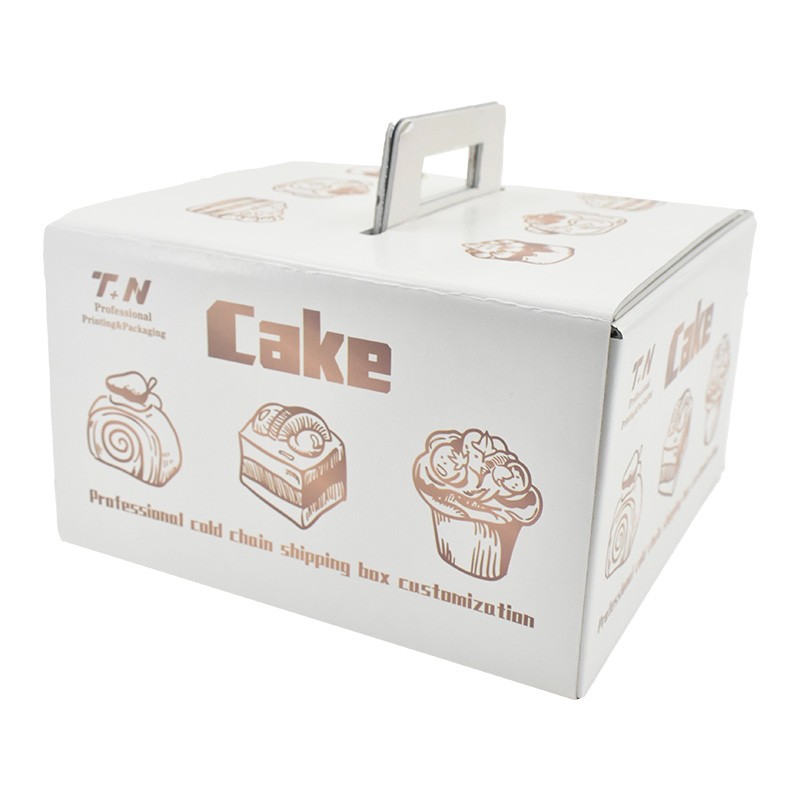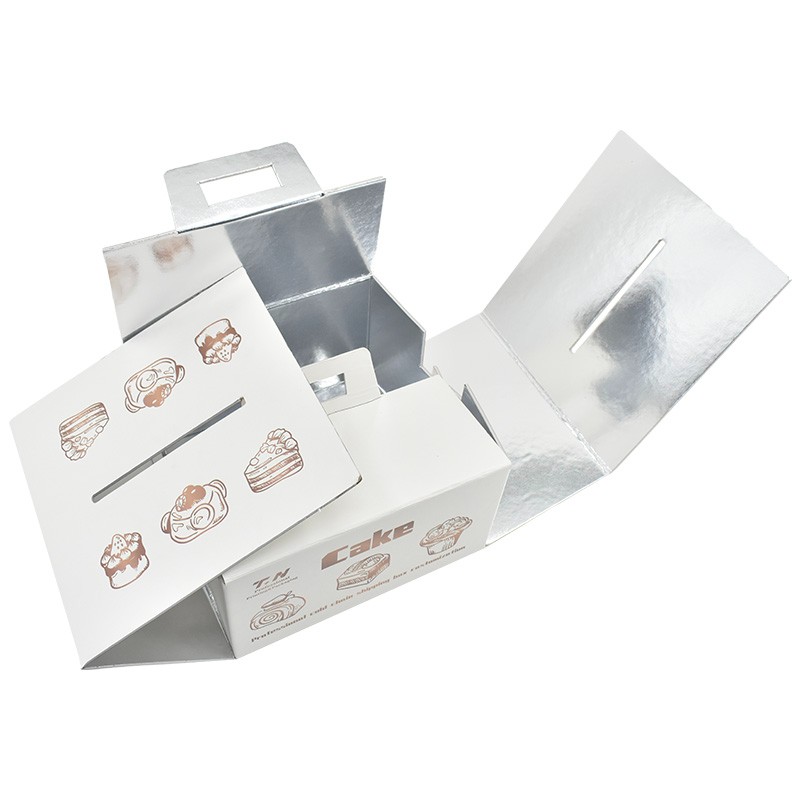Advancements in Frozen Food Packaging for Preservation

Frozen food packaging has come a long way from its early iterations. Consumers now have access to a wider array of frozen foods, thanks to cutting-edge developments in packaging technology. These innovations significantly impact the ability to preserve the freshness of food for extended periods.

One notable advancement is the use of novel packaging. These materials are designed to prevent passage of oxygen, moisture, and other undesirable elements that can lead to spoilage. Moreover, some packaging incorporates active technologies that absorb off-flavors and odors, ensuring the taste of frozen foods remains unchanged upon thawing.
The evolution of frozen food packaging continues to influence the industry, offering food manufacturers a range of advantages. As research and development progresses, we can expect even innovative solutions that will maximize the preservation of frozen foods, providing consumers with healthy options for years to frozen food packaging come.
Environmentally Friendly Solutions for Frozen Food Containers

As people become increasingly concerned of their environmental impact, the demand for sustainable options in various aspects of life is growing. The frozen food industry, known for its ease, faces a particular difficulty in finding sustainable packaging approaches. Traditional frozen food containers often employ non-biodegradable materials like polyethylene, which contribute to landfill build-up and contamination. To address this concern, there is a growing focus on novel sustainable containers for frozen food.
- Renewable Materials: Moving to plant-based polymers derived from renewable resources offers a promising avenue for lowering the environmental burden of frozen food containers. These materials can disintegrate naturally, minimizing landfill waste and promoting a circular economy.
- Refill Containers: Fostering the use of reusable containers can greatly diminish the need for single-use packaging. Consumers can invest high-quality, safe containers that are built to withstand freezing temperatures and frequent use.
- {Edible|Biofilm| dissolvable|Containers: Research into dissolvable films made from ingredients is moving forward. These innovative containers could potentially remove the need for any packaging at all, as they would simply be ingested along with the food.
Moreover, implementing streamlined production processes and reducing food waste can contribute to a more sustainable frozen food industry. Finally, by embracing these sustainable solutions, we can develop a more environmentally responsible future for frozen food containers.

Selecting Material Picking for Frozen Food Packaging
Frozen food packaging demands materials that can withstand the rigors of freezing temperatures and maintain product quality. Suitable material selection is crucial for ensuring shelf durability and preventing freezer burn, thus preserving taste and nutritional value.
Factors like barrier properties against moisture and oxygen, heat resistance, and sustainability play a significant role in determining the most appropriate material for a given frozen food product.
Commonly employed materials include polypropylene (PP), paperboard, and aluminum foil. Understanding the unique characteristics of each material is essential for making informed choices that optimize both product protection and purchaser appeal.
Consumer Perceptions regarding Frozen Food Packaging Design
The success of a frozen food product hinges on many factors, but the design of its packaging plays a vital role in capturing consumer attention. A well-designed package can attract shoppers, communicate food item features, and ultimately influence purchasing choices. Understanding consumer perceptions on frozen food packaging design is essential for manufacturers to create appealing packages that resonate with their target consumers.
Consumers are increasingly mindful of presentation environmental impact, and they often prefer brands committed to lowering their environmental footprint. Furthermore, consumers look for clear and comprehensible labeling that emphasize product ingredients and nutritional value.
Enhanced Shelf Life through Barrier Properties in Frozen Foods
Maintaining the fresheness of frozen foods during storage is paramount to ensure consumer satisfaction. This necessitates the implementation of effective preservation solutions that effectively mitigate factors contributing to spoilage. Structural features play a pivotal role in achieving this goal by limiting the permeation of oxygen, moisture, and other potentially harmful substances into the frozen food.
- Specialized packaging materials often incorporate composite structures designed to create a robust barrier against these environmental factors.
- By minimizing exposure to oxygen, rancidity can be effectively controlled, thus preserving the flavor and nutritional value of frozen foods.
- Hydrophobic characteristics are equally crucial in preventing dessication, which can lead to textural changes and undesirable impacts on the overall quality.
Consequently, the incorporation of effective barrier properties into frozen food packaging can significantly extend shelf life, reduce spoilage rates, and enhance the reliability of the frozen food supply chain.
Influence of Packaging on Frozen Food Quality
Preserving the quality of frozen food hinges on the efficacy of its packaging. Inadequate packaging can lead to freezer burn, ingredient degradation, and an overall decline in the palatability of the product. Conversely, innovative solutions that are moisture-proof effectively preserve the freshness of frozen food, ensuring a appealing eating experience when thawed.
Innovative Trends in Frozen Food Packaging Technology
The frozen food industry is continually adapting to meet consumer demands for convenience. As a result, packaging technology is playing an increasingly important role in ensuring the quality and shelf life of frozen products. Recent trends are driving this evolution, with a focus on sustainability, effectiveness, and consumer experience.
One key trend is the use of biodegradable materials.
Suppliers are investigating alternatives to traditional plastics, such as plant-based compounds. These eco-friendly options help to reduce the environmental impact of frozen food packaging.
Another trend is the implementation of active and intelligent packaging technologies. Active packaging utilizes ingredients that remove unwanted gases or vapor inside the package, extending shelf life and preserving product quality. Intelligent packaging incorporates sensors or indicators that can monitor the condition of the food and notify consumers when it is no longer edible.
These advancements are not only beneficial for the environment but also optimize the consumer experience. Packaging that are more convenient and attractive can boost sales and customer satisfaction.
As technology continues to advance, we can expect to see even more groundbreaking trends in frozen food packaging.
Minimizing the Environmental Impact of Frozen Food Packaging
The frozen food industry poses a unique challenge when it comes to environmental sustainability. Traditional packaging materials for frozen goods, such as plastics, often contribute to landfill overflow and pollute ecosystems. To mitigate this impact, innovative strategies are gaining traction. Biodegradable packaging options, along with optimized production processes, are crucial to creating a more sustainable future for frozen food.
New Designs for Convenient Frozen Food Consumption
Frozen food has evolved significantly over time, offering a convenient and tasty solution for busy individuals. However the traditional method of reheating frozen meals can be laborious. To address this challenge, innovative designers are creating original solutions to make consuming frozen food significantly convenient.
These breakthroughs encompass a wide variety of ideas. Some designs emphasize on optimizing the reheating process, while others prioritize single-serving sizes. Furthermore, there's a growing trend toward environmentally conscious packaging and heating methods.
One noteworthy example is the development of smart containers that can efficiently heat frozen food to the perfect temperature. These containers utilize advanced technology to regulate the heating process, ensuring a tasty meal every time.
Another groundbreaking approach is the use of microwave-safe pouches that can be heated directly in the microwave. This eliminates the need for separate containers, making cleanup more convenient.
These are just a few examples of the exciting designs emerging in the frozen food industry. As technology advances and consumer demand for convenience grows, we can expect even greater groundbreaking solutions that will redefine the way we enjoy frozen food.
Regulations and Criteria for Frozen Food Packaging Safety
Ensuring the safety of frozen food is paramount, and packaging plays a crucial role in preserving quality and preventing contamination. To achieve this, regulatory bodies worldwide have established stringent regulations governing the materials used, design, and labeling of frozen food packaging. These rules aim to minimize the risk of microbial growth, chemical leaching, and physical damage during storage and transportation. Packaging materials must be non-toxic, impermeable to moisture and gases, and capable of withstanding freezing temperatures. Moreover, clear details on the package is essential to inform consumers about proper handling, storage conditions, and potential allergens.
- Key aspects of frozen food packaging safety include:
- Composition selection
- Structure
- Identification
- Inspection
Compliance with these guidelines is vital for protecting public health and maintaining consumer confidence in the safety of frozen food products.
Exploring innovative prospects of Frozen Food Packaging Solutions
As consumer demand for convenient and sustainable food options soars to new heights, the frozen food industry is experiencing a dynamic shift. This evolution extends especially to packaging solutions, with a strong focus on maintaining nutritional value while reducing waste. The future of frozen food packaging presents compelling opportunities, driven by innovative research and a shared responsibility to create sustainable packaging solutions.
- One promising trend is the widespread implementation of compostable materials, derived from plants, which return to the earth without harming the environment.
- Moreover, smart packaging technologies are becoming increasingly popular, incorporating monitoring systems to track product freshness throughout the supply chain.
- In conclusion, the future of frozen food packaging is optimistic, with a emphasis on consumer needs.